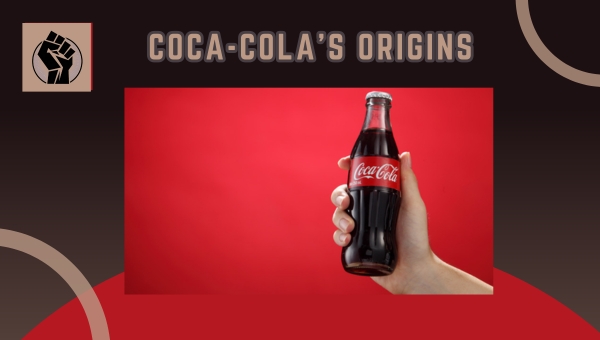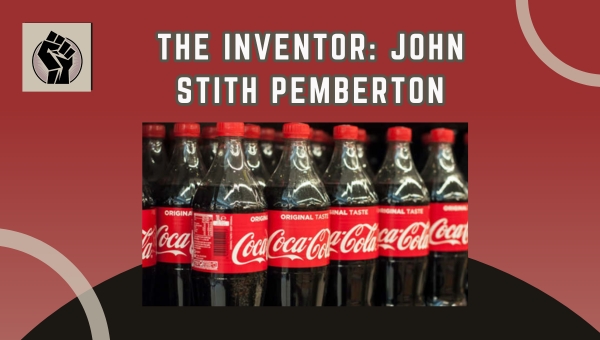It’s a warm day in the late 19th century, and in a small pharmacy in Atlanta, a curious concoction is brewing. This is where Coca-Cola was invented. The drink, which would soon become a global icon, was initially crafted as a medicinal tonic.
As we dive into the story of Coca-Cola, we’ll explore its birthplace, the historical backdrop, and the visionaries who brought this legendary beverage to life.
By understanding these origins, we gain insight into how a simple idea turned into a worldwide sensation, captivating taste buds and hearts alike. Ready to uncover the secrets behind this iconic drink? Let’s begin!
Coca-Cola’s Origins
Coca-Cola’s beginnings are as intriguing as its worldwide fame today. To understand the journey of this iconic beverage, let’s explore the place where it all started, the historical backdrop of its creation, and the significant figures who made it happen.

The Birthplace of Coca-Cola
Coca-Cola was invented in Atlanta, Georgia. The drink was first created in a small pharmacy known as Jacobs’ Pharmacy. This humble setting laid the foundation for what would become one of the most recognizable brands in the world. Initially served as a soda fountain drink, it captured the attention of locals with its unique taste.
Historical Context
During the late 19th century, when Coca-Cola was created, America was a land of innovation and change. The country was undergoing rapid industrial growth, and the culture was shifting towards modernization.
In this environment, new inventions and ideas were flourishing, and beverages like Coca-Cola found a receptive audience eager for novel experiences.
The social scene, particularly in urban areas like Atlanta, was marked by a bustling atmosphere where people sought refreshing drinks and social interaction.
Key Figures Involved
Several key individuals played crucial roles in the early days of Coca-Cola.
Here’s a look at the major contributors:
- John Stith Pemberton: The original inventor of Coca-Cola, a pharmacist who crafted the initial formula.
- Asa Candler: A businessman who purchased the Coca-Cola formula, he significantly expanded its reach and commercial success.
- Frank M. Robinson: The bookkeeper who named the drink “Coca-Cola” and designed the famous script logo, adding to its brand identity.
These individuals collectively contributed to the foundation and growth of Coca-Cola, each bringing their expertise to the table.
The Inventor: John Stith Pemberton
John Stith Pemberton played a crucial role in the creation of one of the world’s most iconic beverages. His journey to inventing Coca-Cola is a testament to his background and expertise. By delving into his past, we can gain insights into how he developed the original recipe that has become so famous today.

Pemberton’s Background
John Stith Pemberton was a pharmacist by profession, born in 1831 in Knoxville, Georgia. His career began with a focus on medicine, where he honed his skills in chemistry and pharmaceuticals.
Throughout his life, Pemberton was recognized for his innovative approach to creating medicinal compounds, which laid the foundation for his later work on Coca-Cola.
His extensive knowledge in the field allowed him to experiment with various formulas, aiming to create a tonic that would appeal to the public. This expertise in chemistry and his entrepreneurial spirit drove him to pursue the creation of a new product that would eventually become a household name.
Development of the Recipe
The development of the original Coca-Cola recipe was a groundbreaking achievement. Here’s how Pemberton crafted this iconic formula:
- Experimentation with Ingredients: Pemberton began by experimenting with coca leaves and kola nuts, which were known for their stimulating properties. He combined these ingredients with other natural extracts to create a unique blend.
- Focus on Flavor: Understanding the importance of taste, he meticulously balanced the flavors to ensure the drink was both refreshing and appealing.
- Initial Purpose: Initially, the beverage was intended as a medicinal tonic, marketed as a remedy for a range of ailments, including headaches and fatigue.
- Evolution into a Beverage: Over time, Pemberton’s creation transitioned from a medicinal concoction to a popular soft drink, thanks in part to its distinct taste and growing consumer demand.
John Stith Pemberton’s innovative approach and dedication to his craft were instrumental in the creation of Coca-Cola, setting the stage for its future success.
The Impact of Atlanta, Georgia
Atlanta, a city bustling with energy and opportunity, played a pivotal role in shaping Coca-Cola’s journey. From economic prospects to cultural nuances, Atlanta provided a fertile ground for the brand’s growth and evolution. Let’s delve into how this vibrant city influenced Coca-Cola’s development.
Economic Factors
Atlanta’s economy offered unique advantages that supported Coca-Cola’s early expansion. Several key aspects contributed to this growth:
- Strategic Location: Atlanta’s position as a transportation hub facilitated easy distribution and access to markets.
- Business Environment: The city’s supportive business climate encouraged innovation and entrepreneurship.
- Financial Resources: Access to local investors and financial institutions provided the necessary capital for Coca-Cola’s initial growth.
Cultural Influence
The culture of Atlanta left a lasting imprint on Coca-Cola’s identity. Several cultural elements played a role in molding the brand:
- Southern Hospitality: This regional trait was woven into Coca-Cola’s customer service and brand image.
- Community Engagement: Coca-Cola actively participated in local events and supported community initiatives, strengthening its local ties.
- Diverse Population: Atlanta’s cultural diversity inspired Coca-Cola to adopt inclusive marketing strategies, appealing to a wide audience.
Through a combination of economic support and cultural richness, Atlanta helped Coca-Cola become not just a drink, but a symbol of innovation and community spirit.
Coca-Cola’s Early Marketing Strategies
Coca-Cola’s journey to becoming a household name was paved with innovative marketing strategies. These strategies were crucial in introducing the beverage to a wide audience.

Let’s delve into the early techniques that helped Coca-Cola carve its niche in the market.
Branding Techniques
To understand how Coca-Cola positioned itself, it’s essential to look at the early branding methods. They were straightforward yet effective, setting the stage for the brand’s enduring identity.
- Unique Logo Design: The iconic Coca-Cola script logo was created in 1886 by Frank M. Robinson. Its distinctive style helped the brand stand out.
- Catchy Slogans: Early slogans like “Delicious and Refreshing” captured the essence of the drink, making it memorable.
- Consistent Packaging: The use of the contoured glass bottle in 1915 became synonymous with the brand, offering a unique and recognizable shape.
Market Expansion
Expanding Coca-Cola’s reach required strategic thinking and innovative approaches. Here’s how the company managed to grow its presence.
- Franchising Bottlers: By the late 1890s, Coca-Cola began franchising its bottling operations, allowing for rapid expansion and local production.
- Advertising Campaigns: Investing in widespread advertising campaigns, including print ads and billboards, helped target a broader audience.
- Product Placement: Coca-Cola was one of the first brands to use product placement in films, reaching viewers in a new and engaging way.
Also Read: CEO of Coca Cola: The Leadership Behind the Global Icon
The Legacy of Coca-Cola
Coca-Cola’s legacy is a testament to its journey from a local beverage to a symbol recognized worldwide. Its story is not just about a drink but about a brand that has transcended borders and cultures.
Let’s explore how Coca-Cola achieved its global status and the innovations that keep it significant in today’s market.
Global Influence
Coca-Cola’s global influence is immense, making it one of the most recognized brands worldwide. From its humble beginnings, the company strategically expanded its presence, ensuring that the familiar red and white logo became synonymous with refreshment.
Sponsorships of major events and partnerships with international organizations have also played a crucial role. Additionally, Coca-Cola’s ability to tailor its marketing to different cultures has helped it resonate with diverse audiences, making it more than just a beverage but a part of people’s daily lives across the globe.
Continued Innovation
Coca-Cola’s commitment to innovation has been key to its sustained relevance:
- Product Varieties: Introducing new flavors and low-sugar options to cater to changing consumer preferences.
- Sustainability Initiatives: Implementing eco-friendly packaging and reducing carbon footprint to align with environmental goals.
- Digital Engagement: Leveraging social media and digital platforms to connect with a younger audience and keep the brand dynamic.
- Collaborations: Partnering with other brands and influencers to create unique experiences and attract new customers.
Through these innovations, Coca-Cola not only adapts to current trends but also sets new standards in the beverage industry.
Conclusion
The journey of Coca-Cola from its humble beginnings to becoming a global icon is truly remarkable. From its invention in Atlanta, Georgia, by John Stith Pemberton, Coca-Cola has grown to influence cultures and economies worldwide.
The brand’s ability to adapt and innovate has kept it at the forefront of the beverage industry. Understanding the historical context and the key figures involved provides insight into its enduring success. Coca-Cola’s story is a testament to strategic marketing and cultural resonance.
If you found this exploration of Coca-Cola’s origins intriguing, be sure to check out more insightful articles on our site for a deeper dive into fascinating topics.





